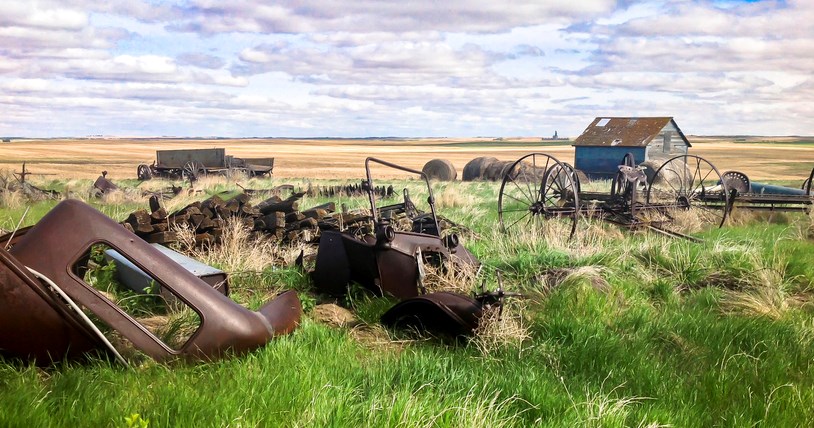NORTHWEST - Harvest progress has doubled in the northwest region this week with 15 per cent of the crop now combined, well ahead of the five-year average of two per cent. An additional 29 per cent of the crop is swathed or ready to be straight cut, with the five-year average 小蓝视频 nine per cent.
The region includes Crop District 9AW – Shellbrook, North Battleford, Big River and Hafford areas; and Crop District 9B – Meadow Lake, Turtleford, Pierceland, Maidstone and Lloydminster areas.
Eighty-two per cent of the field peas, 29 per cent of the barley, 49 per cent of the lentils and 15 per cent of the spring wheat have been combined. An additional 36 per cent of the canola has been swathed.
Areas around Mayfair received the most rainfall this week, reporting 60 mm. The Speers area received 38 mm, the Turtleford area 22 mm, the Pierceland area 16 mm and the Barthel and Meadow Lake areas nine mm. The rain is welcome but there are concerns about crop downgrading.
Moisture conditions increased significantly due to rainfall across the region. Cropland topsoil moisture is rated as 27 per cent adequate, 23 per cent short and 50 per cent very short. Hay and pasture land topsoil moisture is rated as 19 per cent adequate, 27 per cent short and 54 per cent very short.
Pasture conditions in the region are rated as nine per cent fair, 44 per cent poor and 47 very poor.
The majority of crop damage this week was due to wind, dry conditions, hail and geese. Standing or swathed crops might see a downgrade due to rain.
Producers are busy hauling grain, getting bins ready, moving cattle to fields to stubble graze and waiting for conditions to improve and combining to resume.
Rainy, cool weather throughout the province delayed combining progress this week. Harvest progressed to 29 per cent complete, up from 20 per cent last week and well over the five-year average of 12 per cent. An additional 21 per cent of the crop is now swathed or ready to straight-cut, ahead of the five-year average of 16 per cent. Producers would have rather had rain during critical stages of the growing season, but were happy to receive significant amounts of it this week.
Ninety-three per cent of the winter wheat, 78 per cent of the fall rye, 76 per cent of the lentils, 81 per cent of the field peas, 42 per cent of the barley, 31 per cent of the durum, 23 per cent of the oats, 25 per cent of the spring wheat and six per cent of the canola has been combined. An additional 30 per cent of canola has been swathed or is ready to straight-cut.
Harvest progress is most advanced in the southern regions. Producers in the southwest region have 43 per cent combined, the southeast region 30 per cent, the west-central 27 per cent, the east-central 22 per cent, the northeast 25 per cent and the northwest 15 per cent.
Several large weather systems moved through the province last week, resulting in significant amounts of precipitation along with hail in some areas. The Grenfell area received the most rainfall with 97 mm, the Moose Jaw area 77 mm, the Vanguard area 60 mm, the Jedburgh area 55 mm, the Harris area 50 mm and the Nether Hill area 46 mm. The rain will result in downgrading of crops still in the field; however, it will benefit pastures and hopefully allow them to regrow for next year.
The cool weather and large amounts of rainfall across much of the province has helped with the hot and dry conditions, however, much more rain is needed to break out of the current drought. Cropland topsoil moisture is rated as one per cent surplus, 32 per cent adequate, 37 per cent short and 30 per cent very short. Hay and pasture land topsoil moisture is rated as 23 per cent adequate, 34 per cent short and 42 per cent very short. Provincially, pasture conditions are rated as one per cent good, 15 per cent fair, 46 per cent poor and 38 per cent very poor.
The majority of crop damage this week was due to wind, heavy rainfall and hail. Even with the rainfall, crop and pasture land is under extreme stress from the drought. Around the Hodgeville area, a tornado touched down and resulted in considerable damage to one farm yard, damaging equipment, buildings and grain bins.
Producers are busy getting equipment and bins ready for harvest and waiting for crops to dry enough to combine.
With harvest underway in Saskatchewan, we want to remind producers to exercise caution while working out in the field. Be aware, take breaks and remain safe.
Producers are also reminded that in response to the feed shortage this year, SCIC doubled the Low Yield Appraisal threshold values for customers who salvage their cereal or pulse crops as feed, without negatively impacting future individual coverage. Customers are asked to contact their local SCIC office before they graze, bale or silage any damaged crops to discuss their options.
Additionally, the Government of Saskatchewan made changes to temporarily increase the maximum funding a livestock producer can receive from the Farm and Ranch Water Infrastructure Program (FRWIP) for dugouts, wells and pipelines for agricultural use. Producers can contact the Ministry of Agriculture’s Agriculture Knowledge Centre at 1-866-457-2377 for information.
The federal and provincial governments have also increased the 2021 AgriStability interim benefit payment percentage from 50 per cent to 75 per cent for Saskatchewan producers. The interim benefit provides the opportunity for producers enrolled in AgriStability to access a portion of their benefit early, to help support losses and cover costs. To apply for an interim benefit, producers can contact their local SCIC office, call the AgriStability Call Centre toll-free at 1-886-270-8450, or by email .


